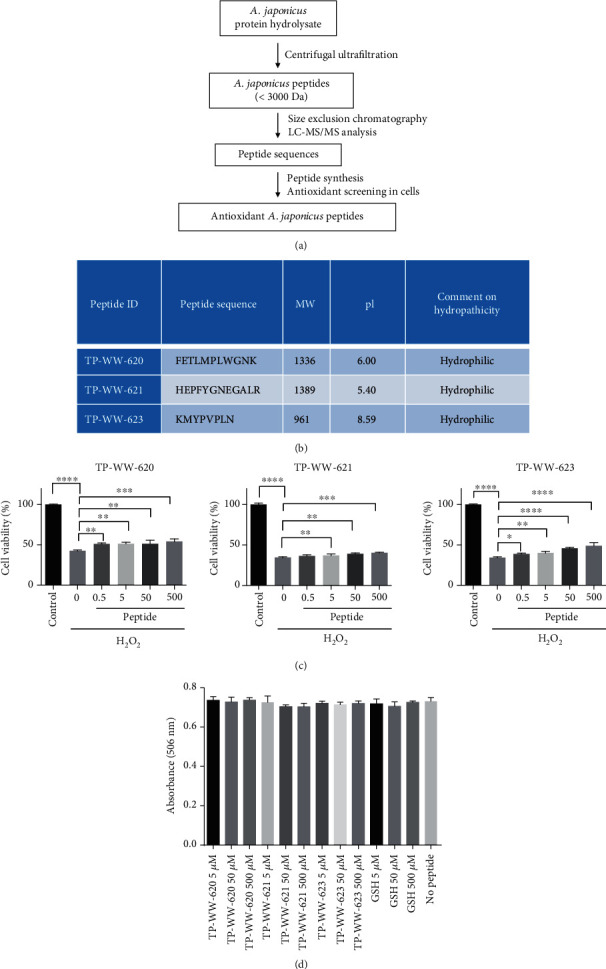Figure 1.

Sea cucumber-derived peptides are nontoxic and protect cells against hydrogen peroxide. (a) A protein hydrolysate from A. japonicus was subjected to centrifugal ultrafiltration to separate peptides less than 3000 Da. The purified pool was further subjected to size exclusion chromatography and LC-MS/MS analysis to identify peptide sequences. The identified peptide sequences were chemically synthesised and subjected to functional screening to identify antioxidant peptides. (b) Sequences and biophysical properties of peptides. (c) SH-SY5Y cells were plated at a density of 1 × 104 cells per well in 96-well plates and grown to approximately 70%-80% confluency. Cells were then treated with different concentrations of peptides for 24 h at 37°C before being washed once with PBS. Next, the cells were incubated with 600 μM H2O2 for 4 h without peptides at 37°C. The metabolic activity of cells was measured by the MTT assay using a plate reader to record absorbance at 570 nm. Metabolic activity is plotted as percentages relative to the untreated control group, which is denoted as 100%. Statistical significance was determined by Tukey one-way ANOVA. Error bars show SD (n = 3). Experiments were repeated three times. (d) SH-SY5Y cells were grown in 96-well cell culture dishes until they reached 60-70% confluency. Cells were then treated with different concentrations of peptides as shown in the figure. After treatment, cells were incubated for 72 h at 37°C. Using a colorimetric MTS assay, absorbance at 506 nm was recorded using a plate reader to quantify cell proliferation.
